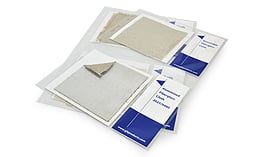Moisture control is something that every plant and facility struggles with, especially ones with pipes and ducts carrying fluids at below-ambient temperatures. When it comes to condensation and mechanical systems, there are three issues to be aware of.
- Loss of energy
- Pipe corrosion
- Unsafe conditions
Systems that operate at below-ambient temperatures have the potential for surface condensation, making them susceptible to mold growth. Common causes of moisture on the surface of mechanical piping include pipe leaks, mechanical abuse, gasket failures, insufficient insulation thickness, a break of the vapor retarder system, and poor workmanship. If any damage to the insulation system is left untreated, it can cause a failure of the total system, resulting in costly repairs and downtime. Understanding how to prevent mold growth will help avoid future problems.
To reduce the risk of mold growth, here are some tips to consider:
- Specify an adequate insulation thickness to prevent surface condensation, especially on cold surfaces. Insulation thickness is a key factor that affects performance.
- Select an insulation material with a closed-cell structure such as elastomeric, polyethylene, polystyrene, fiberglass, stone wool, or cellular glass. These materials are resistant to moisture penetration.
- Install the insulation properly. To help insulation do the job of controlling moisture, water vapor retarder jackets are often installed over insulated pipes. The jacketing provides a shield to water vapor and improved appearance for indoor and outdoor systems.
Following these simple tips can help control the condensation that could lead to mold growth developing in below-ambient systems. However, every mechanical insulation system requires periodic maintenance in order to do its job successfully and efficiently.


